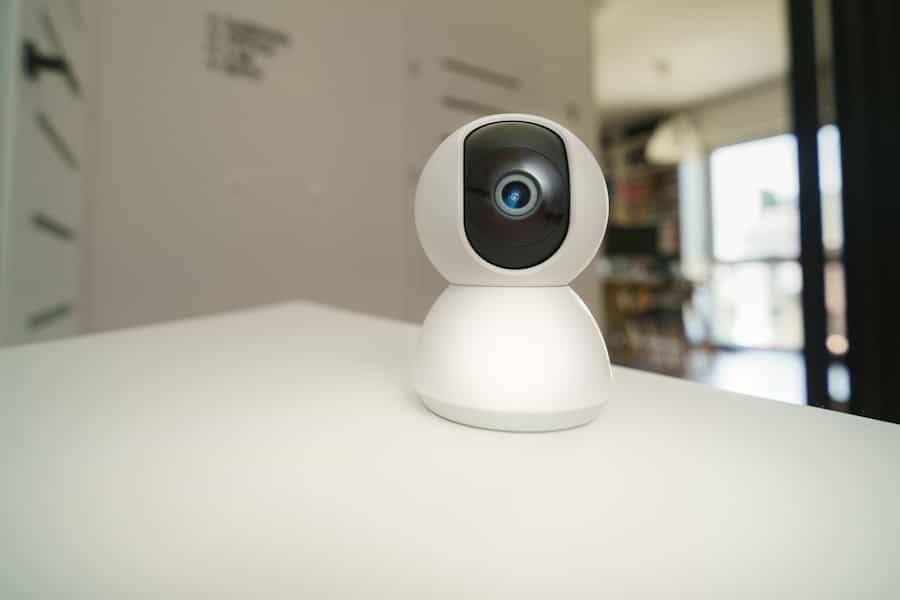In an era where technology seamlessly integrates into our daily lives, smart home devices have emerged as a cornerstone of modern living.
However, the proliferation of smart home technology also brings with it a host of vulnerabilities that can be exploited by malicious actors.
Protecting these devices is not merely a matter of convenience; it is essential for safeguarding personal privacy, financial information, and even physical safety. The interconnected nature of smart home devices means that a breach in one area can lead to a cascading effect, compromising the entire network. For instance, if a hacker gains access to a smart door lock, they may also be able to infiltrate other connected devices, such as security cameras or home automation systems.
This interconnectedness underscores the importance of implementing robust security measures. As more households adopt smart technology, the need for effective protection becomes increasingly critical, making it imperative for homeowners to prioritize the security of their smart home ecosystems.
Key Takeaways
- Protecting smart home devices is crucial for safeguarding personal privacy and security.
- Unprotected smart home devices pose risks such as unauthorized access, data breaches, and potential hacking.
- Advanced firewalls can provide a strong defense against cyber threats targeting smart home devices.
- When choosing an advanced firewall for your smart home, consider factors such as compatibility, ease of use, and customer support.
- Setting up and configuring an advanced firewall for smart home protection requires careful attention to network settings and device permissions.
Understanding the Risks of Unprotected Smart Home Devices
Unauthorized Access to Personal Data
Many smart devices collect sensitive information, including usage patterns, personal preferences, and even biometric data. If these devices are not adequately secured, hackers can exploit vulnerabilities to gain access to this information, leading to identity theft or financial fraud.
Entry Points for Larger Cyberattacks
Unprotected smart home devices can serve as entry points for larger cyberattacks. Cybercriminals often target less secure devices as a means to infiltrate a home network. Once inside, they can deploy malware or ransomware, potentially locking users out of their own systems or demanding payment for the restoration of access.
Risks to Critical Infrastructure
The risk extends beyond individual households; large-scale attacks on smart home devices can lead to widespread disruptions in critical infrastructure, highlighting the need for comprehensive security measures.
How Advanced Firewalls Can Safeguard Smart Home Devices

Advanced firewalls play a pivotal role in protecting smart home devices from various cyber threats. Unlike traditional firewalls that primarily focus on blocking unauthorized access based on predetermined rules, advanced firewalls utilize sophisticated algorithms and machine learning techniques to analyze traffic patterns and detect anomalies in real-time. This proactive approach allows them to identify potential threats before they can cause harm.
One of the key features of advanced firewalls is their ability to segment network traffic. By creating separate zones for different types of devices—such as IoT devices, computers, and smartphones—firewalls can limit the potential damage caused by a compromised device. For example, if a smart camera is hacked, the firewall can prevent the attacker from accessing other critical devices on the network, such as a smart lock or a home automation hub.
This segmentation not only enhances security but also provides homeowners with greater control over their smart home environment.
Choosing the Right Advanced Firewall for Your Smart Home
Selecting the appropriate advanced firewall for a smart home requires careful consideration of several factors. First and foremost, homeowners should assess their specific needs based on the types and number of devices they have. Some firewalls are designed to handle larger networks with multiple devices, while others may be more suitable for smaller setups.
Understanding the scale of your smart home ecosystem is crucial in making an informed decision. Another important aspect to consider is the firewall’s compatibility with existing devices and systems.
Additionally, features such as user-friendly interfaces, remote management capabilities, and regular software updates should be prioritized. A firewall that is easy to configure and maintain will ensure that homeowners can effectively manage their security without becoming overwhelmed by complexity.
Setting Up and Configuring an Advanced Firewall for Smart Home Protection
Once an advanced firewall has been selected, the next step is setting it up and configuring it for optimal protection. The installation process typically involves connecting the firewall to the home network and configuring its settings through a web interface or mobile app. During this phase, homeowners should take care to customize security settings based on their specific requirements.
Configuring an advanced firewall often includes setting up rules for traffic management and access control. Homeowners should define which devices are allowed to communicate with each other and establish restrictions on external access. For instance, it may be prudent to block remote access to certain devices while allowing others to communicate freely within the network.
Additionally, enabling features such as intrusion detection and prevention systems (IDPS) can provide an extra layer of security by monitoring network traffic for suspicious activity.
Additional Security Measures to Complement Advanced Firewalls

Limitations of Advanced Firewalls
While advanced firewalls are a critical component of smart home security, they should not be relied upon as the sole line of defense. Implementing additional security measures can significantly enhance overall protection.
Regular Updates and Strong Passwords
One effective strategy is to regularly update device firmware and software. Manufacturers often release updates that address known vulnerabilities; failing to apply these updates can leave devices exposed to attacks. Another important measure is to use strong, unique passwords for each device and account associated with the smart home ecosystem.
Additional Security Measures
Utilizing password managers can help generate and store complex passwords securely. Furthermore, enabling two-factor authentication (2FA) wherever possible adds an additional layer of security by requiring users to verify their identity through a secondary method.
Monitoring and Managing Smart Home Device Security with Advanced Firewalls
Effective monitoring and management of smart home device security are essential for maintaining a robust defense against cyber threats. Advanced firewalls often come equipped with monitoring tools that provide real-time insights into network activity. Homeowners should regularly review logs and alerts generated by the firewall to identify any unusual behavior or potential breaches.
In addition to monitoring traffic patterns, homeowners should establish a routine for reviewing device settings and permissions. Regularly checking which devices are connected to the network can help identify unauthorized access or rogue devices that may have infiltrated the system. By staying vigilant and proactive in managing their smart home security, homeowners can significantly reduce the risk of cyberattacks.
The Future of Smart Home Device Security and Advanced Firewalls
As technology continues to evolve, so too will the landscape of smart home device security. The future promises advancements in artificial intelligence and machine learning that will further enhance the capabilities of advanced firewalls. These technologies will enable firewalls to adapt dynamically to emerging threats, providing even more robust protection against sophisticated cyberattacks.
Moreover, as more consumers become aware of the importance of cybersecurity in their homes, there will likely be an increased demand for integrated security solutions that combine advanced firewalls with other protective measures such as antivirus software and intrusion detection systems. This holistic approach will create a more resilient smart home environment capable of withstanding an ever-evolving array of cyber threats. In conclusion, protecting smart home devices is paramount in today’s interconnected world.
By understanding the risks associated with unprotected devices and leveraging advanced firewalls alongside complementary security measures, homeowners can create a secure environment that safeguards their privacy and enhances their quality of life. As technology continues to advance, staying informed about best practices in smart home security will be essential for ensuring long-term protection against cyber threats.
Protecting Smart Home Devices with Advanced Firewalls is crucial in today’s interconnected world. With the rise of smart home technology, it is important to ensure that our devices are secure from potential cyber threats. An article that complements this topic is Stay Stylish with Wear OS by Google, which discusses the latest advancements in wearable technology and how to keep your devices safe while staying fashionable. By implementing advanced firewalls and staying informed about the latest security measures, we can enjoy the convenience of smart home devices without compromising our privacy and security.
FAQs
What are smart home devices?
Smart home devices are electronic devices that are connected to the internet and can be controlled remotely. These devices include smart thermostats, security cameras, smart locks, and smart lighting systems.
What is a firewall?
A firewall is a network security system that monitors and controls incoming and outgoing network traffic based on predetermined security rules. It acts as a barrier between a trusted internal network and untrusted external networks, such as the internet.
Why is it important to protect smart home devices with advanced firewalls?
Protecting smart home devices with advanced firewalls is important because it helps prevent unauthorized access and cyber attacks. Without proper protection, smart home devices can be vulnerable to hacking, which can lead to privacy breaches and security risks.
How can advanced firewalls protect smart home devices?
Advanced firewalls can protect smart home devices by monitoring and filtering network traffic, detecting and blocking malicious activities, and implementing security policies to prevent unauthorized access. They can also provide secure remote access to smart home devices.
What are some examples of advanced firewalls for smart home devices?
Examples of advanced firewalls for smart home devices include next-generation firewalls (NGFW), unified threat management (UTM) appliances, and software-based firewalls with advanced security features such as intrusion prevention systems (IPS) and deep packet inspection.

